A Local’s Guide to Travel in Northern Spain
Affiliate disclosure: some of the links in this article are affiliate links. If you book using one of them, we’ll earn a small commission. All of our info is free to read and free of ads, so we appreciate it!
Northern Spain is the greenest, wettest, and leafiest area of Spain, a stretch of coast that goes from the Basque Pyrenees in the east - at the border with France - all the way west to the Atlantic seaside in Galicia, right at the northern point of the border with Portugal.
The North of Spain is known for its breathtaking landscapes, its mix of mountains and sea, and the many delicious regional cuisines. It’s a place of sleepy villages, hard working towns, and unassumingly lovely mid-size cities in which you’ll wish to get lost forever.
The region’s hilly and green landscapes invite visitors to enjoy outdoor activities of every nature while her wild coast, the most remote and unforgiving of anywhere in the country, boasts empty beaches, small coves, and staggering cliffs.
And above all, as every Spaniard will tell you, the North shares a love for its traditional cuisine, which is beyond comparison with anywhere else in Spain. The north’s food is exceptional, and you’ll have delicious meals everywhere you go, whether in small villages or big cities.
So, are you hungry for a bite of Northern Spain yet? Then keep reading!
More Spain travel info:
Table of Contents
Northern Spain planning cheatsheet
 Plan your itinerary with expert advice
Plan your itinerary with expert advice
- Book a Spain travel consultation with a local expert
 My favorite hotels
My favorite hotels
- Hotel de Londres - San Sebastián's best hotel for light luxury. $200-400/night
- Catalonia Donosti - Great midrange choice in San Sebastián. $150-300/night
- The Artist Grand - Wonderful luxury hotel overlooking Bilbao's Guggenheim museum. $200-350/night
- Letoh Letoh Bilbao - Fantastic value in Bilbao's historic center. $100-200/night
- Gran Hotel La Perla - Historic and lovely hotel on Pamplona's main square. $200/night
 Guided tours and activities
Guided tours and activities
Plan your itinerary with local help
If you could use some personalized help planning your visit to Northern Spain, schedule a Spain travel consultation with Alfonso, our Basque Country-based Local Expert.
These are one-hour Zoom calls where you’ll get to chat with Alfonso about the trip you’re planning and he’ll share his tips and advice, answer your travel questions, and help you perfect your itinerary.
Where is Northern Spain?
What exactly counts as “northern Spain”? Where do its borders start and end? We Spaniards are still asking those questions, and the answers vary widely depending on what part of the country you’re in.
For southerners, Northern Spain is everything above Madrid.
For people from Madrid, however, the North is made up of the universally accepted northern regions of Galicia, Cantabria, Asturias, the Basque Country, and Navarra, along with some questionable inclusions like Aragón, la Rioja, and even Catalunya.
But if you ask a true northerner what constitutes Northern Spain, there’s only one real answer: the north is that stretch of coast that goes from Navarre in the east - at the western foot of the Pyrenees - until Galicia in the far west. It’s comprised of 5 Spanish regions: the Basque Country, Cantabria, and Asturias, Galicia, and Navarre.
It is a thin strip of almost 1,000 kilometers of coast that runs from the Spanish-French border at the Cantabrian sea to the Spanish-Portuguese border in Galicia.
Best time to visit
A cove in the Rias Baixas in Galicia
The best time to visit Northern Spain is indisputably during the summer, since it is the only period when you can be sure to have nice, warm weather.
The true character of the north is hidden in its paradisiac beach coves, remote forests and mountains, and tiny villages forgotten in time. And summer is the ideal time to visit because the good weather, something you can’t take for granted the rest of the year, will let you explore the area’s most wild and remote corners.
Since Northern Spain is mostly far off the tourist trail, summertime also doesn’t translate to huge crowds. Even in the height of summer, you won’t find tour buses or cruise ships unloading masses of day trippers.
Visiting in spring and autumn
Visiting outside of the summer can be a viable (and even good) option if your travel plans aren’t weather-dependent. For example, if you’re primarily interested in exploring cities and want to experience culture and cuisine rather than nature, visiting in May and June or September and October can be ideal.
Both late spring and early fall typically provide nice weather while allowing you to avoid the summertime crowds that descend on popular cities like San Sebastián, Bilbao, and Santiago. These are also nice periods for experiencing the culture and flavor of local life as these are seasons when people’s daily routines are fully in swing (as opposed to the summer when many locals take their vacation).
Visiting in winter
Visiting Northern Spain in winter is only for serious adventurers, or those who like cold and rain. In the north, the months of December, January, and February seem like the region of Winterfell in the Game of Thrones TV show; dark and full of terrors.
Now, it’s not that it will be especially cold here, but it will be almost perpetually rainy and windy, which really doesn’t make for a great vacation. And at the highest points of the mountain areas it will most definitely be snowy.
So, for the most part, winter in the North is for northerners - we live here, so we deal with it. But you don’t have to, so it’s best to come at another time.
How long to spend in northern Spain
10 days - for a solid introduction
Northern Spain stretches across almost 700 kilometers, from Pamplona in the east to Galicia’s Atlantic coast in the west. Why do I mention this? Well, it’s a lot of ground to cover, so you need a decent amount of time to do it!
To visit Northern Spain in any depth, you need at least 10 days. As I’ve tried to signal, the north has a lot to offer; charming villages, bustling port towns, cosmopolitan cities, and fantastic nature both on the coast and inland. To explore it all, you need some time.
Considering that Northern Spain comprises 5 different regions, and that each is very much worth visiting, you should plan on spending at least 2 days in each of them. 10 days will let you do that, albeit in a rather rushed manner.
10 days will let you explore the food and culture of San Sebastian, the Basque coast and city of Bilbao, the Picos de Europa mountains in Cantabria, the Asturian cities of Oviedo and Gijón, and then a mix of nature and lovely towns in Galicia.
Pretty good for just a week and a half!
2 to 3 weeks - for the perfect trip
If time and money are no obstacle, then two to three weeks is really perfect.
Why? Because, again, the magic of the North is truly found in its tiny villages, places where a local might invite you to a meal in the tavern owned by his family or out for a day on his boat, and in its hidden landscapes where you’ll find yourself in absolute solitude, wondering how it’s possible to be so isolated in Western Europe.
The magic of northern Spain is hidden, and to find it you’ll have to wander, walk with no direction, and get lost. And you can’t do that in just a couple of days; getting lost takes time.
How to get to northern Spain
Luckily for travelers, and those of us who live here, the remote and wild spirit that defines Northern Spain doesn’t mean that it’s at all difficult to get to this area.
With two of the most important airports in the Spanish peninsular territory - Bilbao and Santiago de Compostela - getting to Northern Spain is quite easy. There are no shortage of flights into the region. On top of that, the plane is far from the only way to get here.
Let’s look at your options.
Arriving by air
In terms of air transport, Bilbao and Santiago de Compostela are the two main international airports of Northern Spain. Both are connected to the main cities of Europe, although any transatlantic flight will have to make a connection in bigger European airports first, such as Madrid, Barcelona, Paris, Frankfurt, etc.
There are also other smaller airports spread out all over the northern coast (Vigo, A Coruña, Asturias, Santander, Vitoria, San Sebastián, Pamplona), but their international connections are scarce and depend mainly on the offerings of low-cost carriers such as Vueling, Volotea, and Ryanair.
Even so, if you’re traveling in from other parts of Spain or Europe, there may be some good options to these smaller airports.
By train
If you are coming from elsewhere in Europe, especially from France, the train is a perfect option to get to Northern Spain. The TGV (French high-speed train) will take you in a few hours from Paris to Hendaye, which is just a 20-minute ride from the Basque city of San Sebastian.
Also, all the cities in the North of Spain are well connected by train with Madrid, which is the center of the “train universe” in Spain. No matter where you are in Spain, you’ll likely be able to get to Madrid, and then from there, the north of Spain is just an easy train ride away.
By bus
There are also bus-lines operating throughout Western Europe that can take travelers to Northern Spain. The main company for this is FlixBus, and they have services running through the Basque Country on their way from Germany to Portugal.
The buses are cheap, but traveling to Spain from Central Europe is quite tedious. It’s a long journey.


Where to stay in Northern Spain - best bases
Northern Spain is thin and long, something that makes finding one or two bases from which to travel around the whole area impossible. That’s why I’d propose four different bases, running from east to west, to properly travel around Northern Spain.
San Sebastián - in the east of the region
If the North of Spain is the place to go to enjoy Spanish cuisine at its fullest, San Sebastián - also known as Donostia - is definitely its Mecca. Probably the most beautiful city in the country thanks to its belle epoque look, famous for its little bites known as pintxos, San Sebastián is also the perfect base from which to get to know the Basque Country and Navarre.
From San Sebastian, you can find any type of transportation (trains, buses, rental cars, etc.) and it’s located just one hour one from the other three main cities of the area - Bilbao, Vitoria and Pamplona.
Likewise with the natural areas of the Basque Country and Navarra, whether you want to head into the mountains or the Cantabrian Sea, they are not further than a two-hour trip from Donostia.
Potes - in the center east
On your way west from the Basque Country, your next goal should be to visit the Picos de Europa, one of the most magnificent seaside mountain ranges you can encounter in Southern Europe. This is an unforgettable area for lovers of outdoor activities such as hiking, biking, camping, or climbing, and it’s also a place full of charming tiny mountain villages.
Among all of them, Potes is your best option when trying to find a base to explore the Picos de Europa. It offers all that a visitor can need, but without losing its isolated charm - unless you visit it in July and August, when it will be completely packed.
If you’r visiting during the height of summer, I would actually recommend trying lesser-known villages, such as Sotres, Arenas de Cabrales, or La Vega.
Gijón or Oviedo - in the center west
If you keep going west, the next region you’ll find is Asturias. Here, I propose two different options depending on your mood.
On one hand, Gijón is a boisterous, seaside city that offers all the fun that you can expect for a maritime city open to the sea. Good food, nice people, and even better cider.
On the other hand, there is Oviedo, the cultural, political, and commercial capital city of Asturias. An absolute beauty, the city is full of historic heritage that traces back to Roman times.
Both cities are less than an hour apart from each other, so your choice of where to base yourself in Asturias depends on just one question: what do you prefer to contemplate when you wake up: the Cantabrian Sea in Gijón or the architectural magnificence of Oviedo? There’s no wrong answer.
A Coruña or Santiago de Compostela - in the west of the region
And finally, we’ve reached Galicia, the region the Romans thought was the end of the world. And here, again, I have two options for you, but which one is right will depend on the time of year that you’re visiting, not your travel style.
All things being equal, there’s no question that the most comfortable choice for visiting and getting to know every corner of Galicia would be Santiago de Compostela. This gorgeous medieval town is located close to the center of the region, and its connections by train or bus with any other point of interest are perfect.
What is the problem, then, you might ask. Well, unfortunately, during the summer, hordes of pilgrims walking the Camino de Santiago literally seize the city, making it very difficult to even walk or just find a place to eat.
So, if you’re visiting in the summer, the better choice would be A Coruña, a maritime seafaring city open to the sea, with a vibrant nightlife, and located just 30 minutes by train from Santiago. Not bad for plan B!

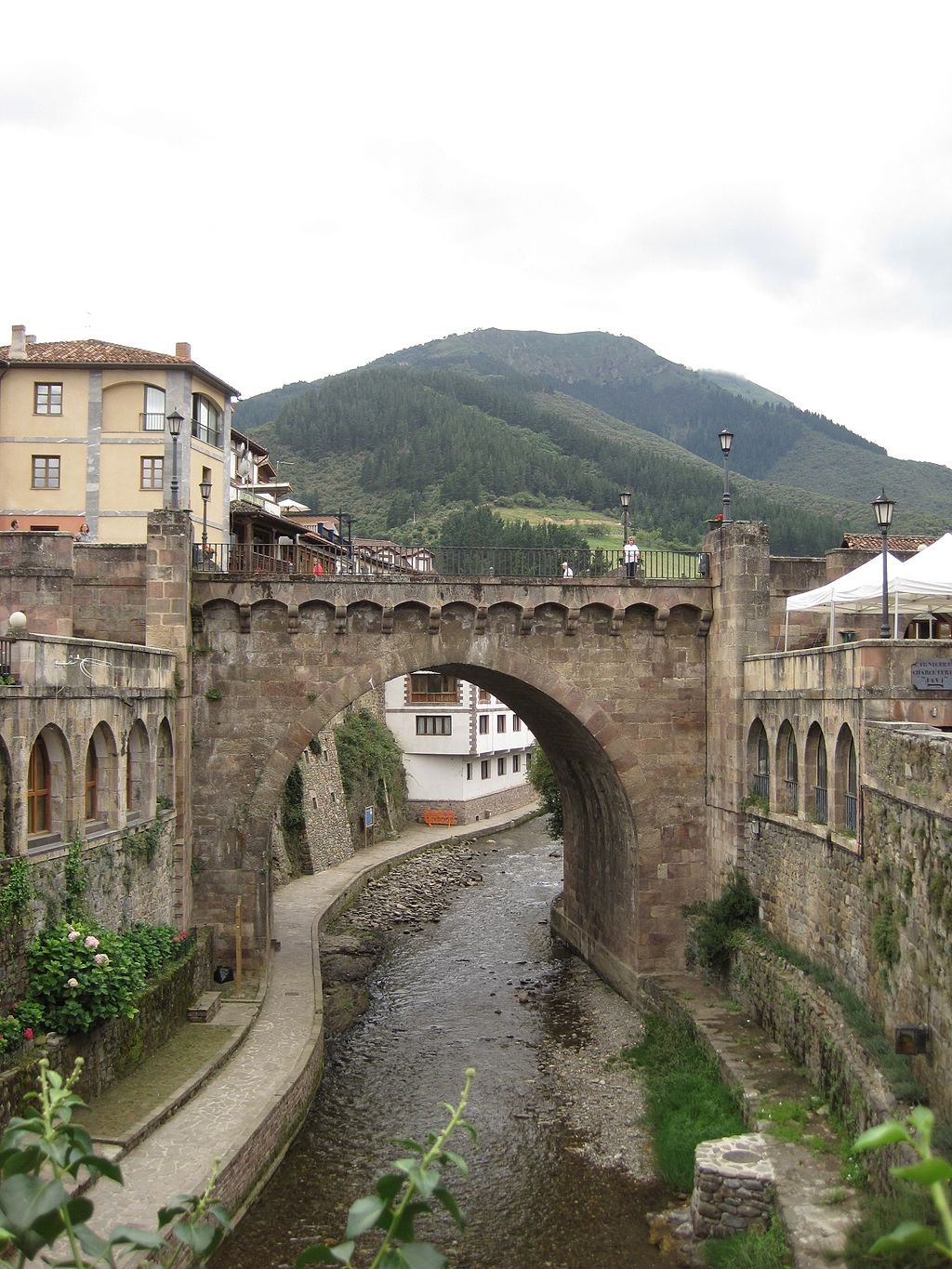
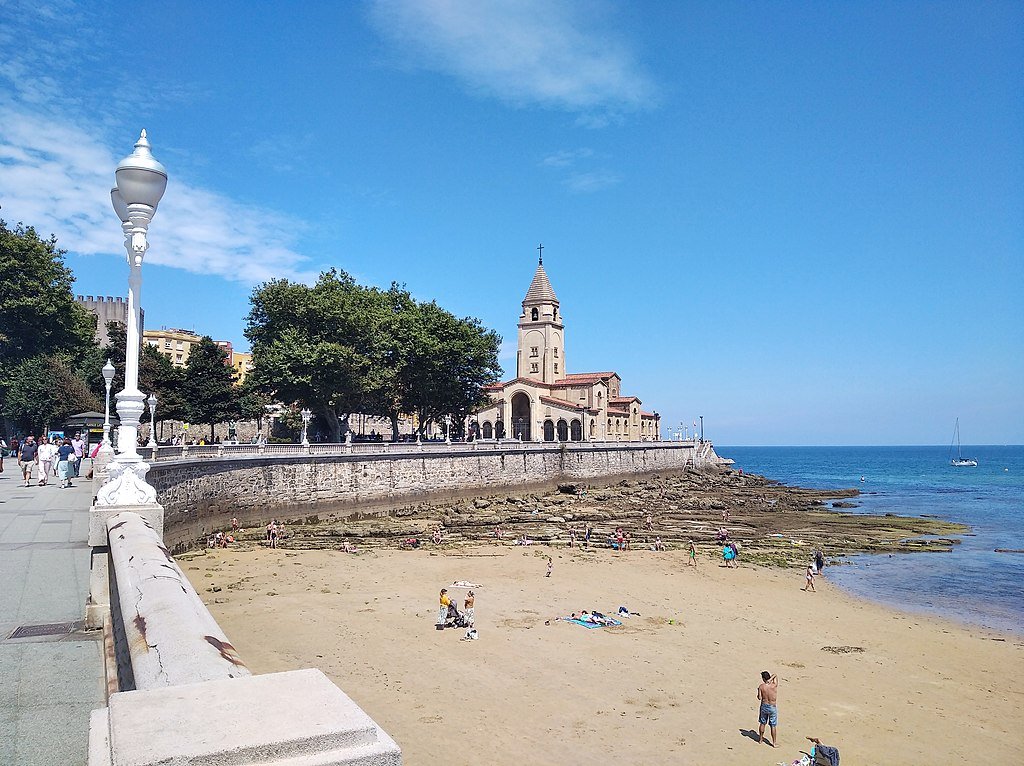
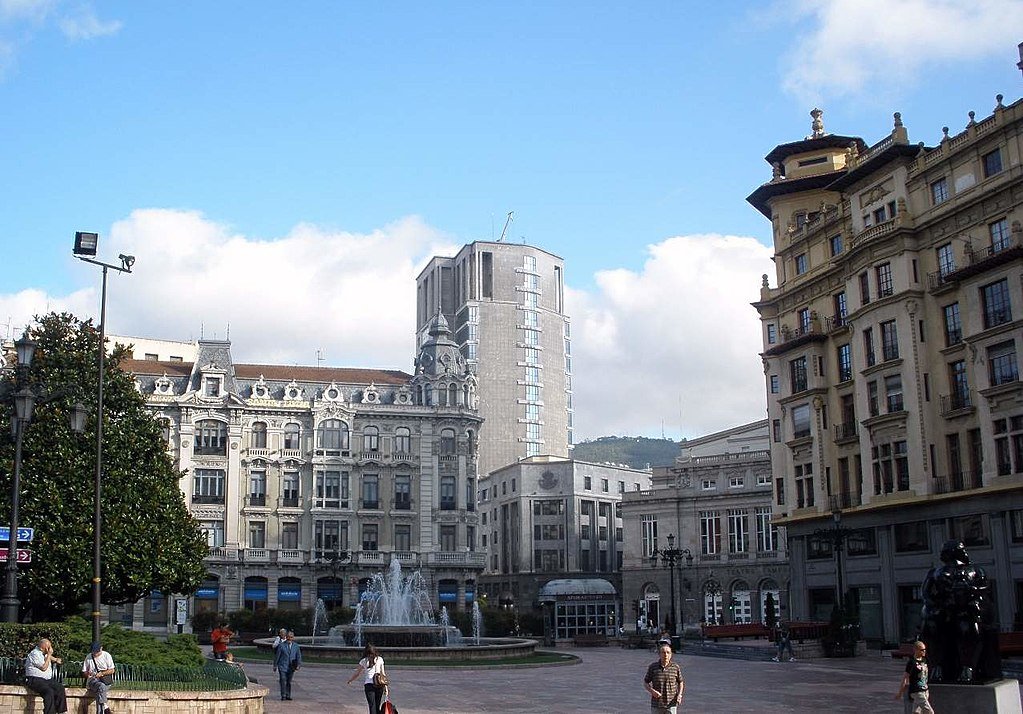

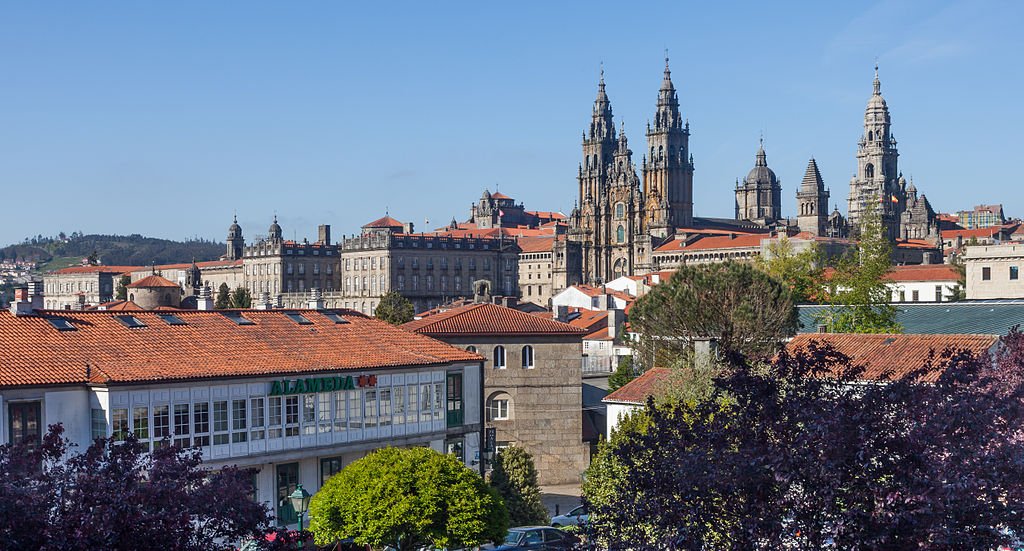
Transportation and how to get around
A new Alsa coach bus. Photo: LaraLNAV, CC BY-SA 4.0, via Wikimedia Commons
Taking public transportation
The bus (usually provided by Alsa) and the train (operated by the state-run Renfe) are viable options for traveling to all the main spots throughout Northern Spain. If relying entirely on public transportation, you will have no problem reaching our cities, medium-sized villages, and major tourist landmarks.
Where to buy train and bus tickets
In general, I recommend booking your public transport tickets directly with the service provider. That said, when you have a lot of options or when you’re not familiar with the different companies, it can be a real hassle to look them all up in order to compare routes and prices.
Omio is an aggregator that shows options for public transport routes all over the world. When you do a search, you’ll be able to see all your options for trains, buses, flights, and even ferries along with a host of different companies that provide the services. Comparing prices is easy, the site has a great design, and you can keep all your bookings in one place. It costs a little bit more than booking direct, but it’s really convenient.
Traveling by car or campervan
If you want the freedom to move about every corner of northern Spain, and want to discover its most isolated areas, a car or campervan is your best option. Having your own set of wheels will let you get well off the beaten path.
Renting a car
Renting a car in northern Spain is extremely easy, and no matter where you are there will always be rental offices no further than 100 kilometers away. All the main cities in this region have car rental companies based in them, as do all of the airports. For the best selection, you’ll want to rent from a city with an international airport or a busy train station.
The average price per day for a compact car should be around 25 euros, with some variation depending on the location, time of year, and whether you need an automatic transition or not.
Where to find a car rental
To check prices and book, I recommend using DiscoverCars, a car rental website that includes offerings from all the major international rental companies as well as lots of smaller local agencies, which often have much better pricing. You can often find great deals.
I use it myself and have always had good experiences.
If you’re thinking about a campervan, Indie Campers and RoadSurfer are two of the big rental companies.
Driving in northern Spain
Driving in northern Spain is easy and I fully recommend it. Highways and expressways are the standard all throughout Spain, and the roads are, for the most part, in very good condition. Unless you find yourself in the most remote of country roads, where nobody has ever been, you will be able to get around with any type of car without a problem.
Locals are not known for driving aggressively, and away from city centers, you are also unlikely to experience heavy traffic or too many stressful situations.
There are many beautiful spots in the North of Spain that are only reachable by car, so this is really the best way to travel around the region.

Connect with Alfonso in San Sebastian for help perfecting your itinerary, answers to all your travel questions, and fabulous local tips!
Getting around by public transportation
As I’ve mentioned above, public transportation is a convenient and very affordable, and it will get you most everywhere you want to go, as long as you’re not intending to stray too far from the big cities and main attractions.
Local/municipal buses
All the cities of Northern Spain operate a comfortable public metropolitan bus service that connects the downtown with any other neighborhood of the city, as well as with its immediate surroundings (beaches, villages/suburbs, nearby nature spots).
San Sebastián, Santander, Gijón, Oviedo, A Coruña, and Vigo all have good municipal bus systems. Their stops are spread-out all-over town, and the buses run from the early morning (6 AM) to midnight, more or less, with departures at least once per hour.
Some of these cities extend the bus service all night on the weekends and holidays so that those who want to enjoy a night out can still get home afterwards.
The price of local/metropolitan buses, either during the day or the night, is usually around 1 to 2 euros.
In terms of public transportation, Bilbao is a special case, since it is almost double the size of any other city in Northern Spain. That means that in addition to buses, Bilbao has a subway service that connects its entire metropolitan area, and runs from 6:00 AM to 11:00 PM (or 02:00 AM, on Fridays and Saturdays).
Medium-distance bus journeys
For medium distance trips to villages, beaches, and natural areas that are close by but not right within the metropolitan area of a city, there is a different bus line that runs those routes.
Every town works with a private company (the company varies from city to city) to cover this service. The departures are less frequent, so you need to check the schedule carefully, and the distance for trips can run from one to two hours. Normally, these buses depart from a designated central bus station located in the downtown, and tickets shouldn’t cost more than 10 euros.
Long-distance buses
Now, when it comes to traveling between regions of northern Spain, the Alsa bus company will be your best friend. This firm offers trips between all the main cities in Northern Spain at practically any time of the day, and you have a wide range of times to select when to depart.
Its price? It depends on the distance: from 10 euros for one or two-hour trips, to 70 euros for those journeys that cover the whole stretch of the coast, from the Basque Country to Galicia.
Trains
Finally, some regions also offer a train service, which connects the cities and towns of the region. There is a problem though: there is no such a thing as a train line that connects the main cities of Northern Spain. If relying on public transportation, you’ll need to take the bus between the major cities.
Galicia has a train line that runs through the cities of A Coruña, Santiago and Vigo. The Basque Country operates a fantastic commuter train all over its territory. But if you are looking for a train that will allow you to hop from town to town in Northern Spain, I’m sorry, but you won’t find it.
Expenses and average travel costs
When it comes down to costs, there is one undeniable fact: the Basque Country is one of the most expensive regions in Spain. It may actually be the most expensive, costing more than even Madrid and Barcelona.
If you start you journey in San Sebastián, don’t be surprised if you pay 5 euros for a little pintxo, 2 euros for a café con leche, 3 for a glass of wine, 100 euros for a simple hotel room (during the summer), and 20 euros for a taxi ride. These costs are normal here.
The good news, though, is that the Basque Country, and specifically San Sebastián, are not the norm - thank God.
On the contrary, the further west you go, the cheaper things will get. For example, in cities like A Coruña or Gijón, you will be able to have a nice “menú del día” lunch (a fixed-menu meal of a starter, a drink, and dessert or coffee) for 12 euros, and hotel rooms go down to as 40 or 50 euros a night.
In small villages in Asturias or Galicia, it will be even cheaper. In these places, prices will be so good that you’ll find yourself checking and double checking the bill to make sure they haven’t forgotten to charge you for items. A big sandwich plus a beer for 5 euros? Yep, that’s possible.
Northern Spain is an area full of contrasts between its different regions, and that also applies to its prices. So, play it smart, be mindful of where you are and what things will cost there, and decide to splurge on gourmet meals in the western part of the region!
Because of the wide variation in prices, it’s hard to give a representative cost for things, but here are some ballpark figures that we Northerners would consider reasonable:
Hotels: 60 to 80 euros for a room in a three-star hotel. Around 40 euros in a guesthouse.
Meals: 15 to 20 euros for a good, everyday kind of meal (per person). 30 to 45 euros for a more special dinner with wine and desserts.
Alcohol: 2-3 euros for a glass of wine, 2 euros for a caña (small glass of beer), 7 euros for a cubata (rum/gin/vodka/tequila mixed with a soda).
Car rental: 25 euros per day for a compact, manual transmission car. More for an automatic.
Taxi ride: A ride from the airport to the downtown usually goes from 15 to 30 euros, depending on how far the airport is from the city. Shorter trips through the city itself go from 5 to 15 euros.
Public transport: Tickets for city and metropolitan buses, as well as for the metro, normally costs around 2 euros. Longer trips inside a region can go up closer to 10 euros.
And interregional trips depend on the distance: from 20 euros for one or two-hour trips, to 70 euros for long-distance ones.
Entrance tickets to museums, sites, monuments: 3 to 7 euros.
Paying for things and using credit cards
Using credit cards
In cities and larger towns, credit cards and debit cards will be accepted almost everywhere. There will be ATMs at every corner, so you’ll never struggle to find somewhere to withdraw cash (but you also won’t need it often!).
Since the Covid-19 pandemic, cash has largely become a thing of past times in big cities.
However, if you travel to the wildest, lesser-known parts of Northern Spain, make sure you always carry some cash with you. ATMs are scarce, and not all establishments will allow card payments.
In fact, in many of these remote places, there is only one store in the whole town or area, and they may very well not accept credit cards. Your choice will be to pay in cash or not buy anything.
Tipping
Tipping is not a common thing in Spain, and it is nothing at all like the almost-mandatory custom in North America. We Spaniards only tip in special cases, and it is as a sign of recognition for excellent service. Tipping at bars and restaurants here is never expected, and if you were to leave a 10% tip, that would be very, very generous already.
Tips are surely appreciated, so if you’d like to leave something people will be very receptive, and you’ll probably receive great service if you return to that establishment, but there is no expectation of a tip and no one will be upset or even notice if you don’t leave one.
What to do in Northern Spain

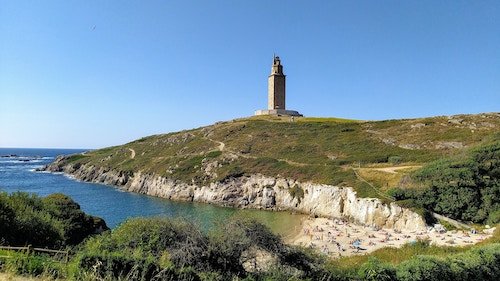
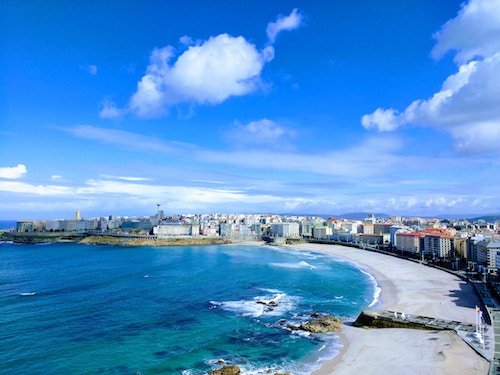
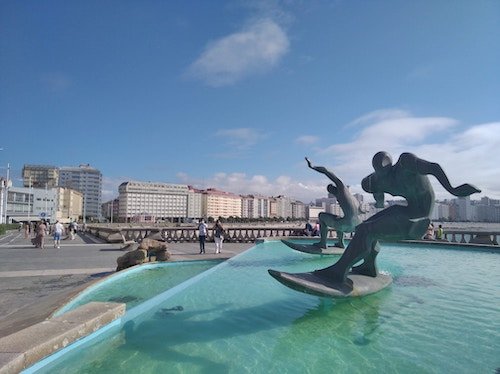
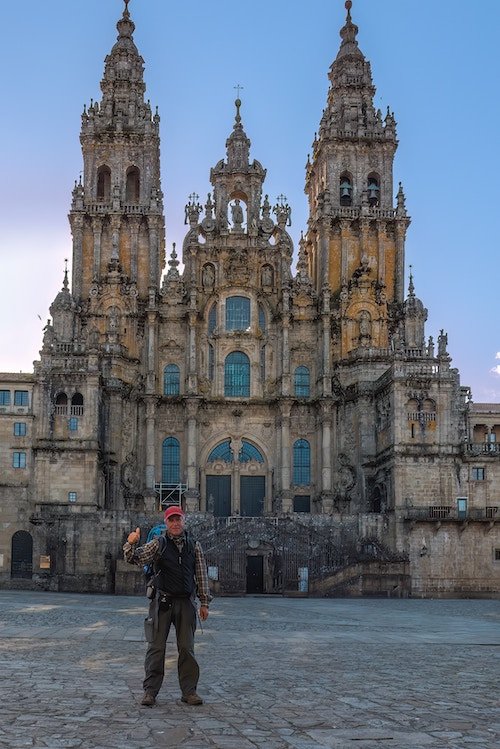
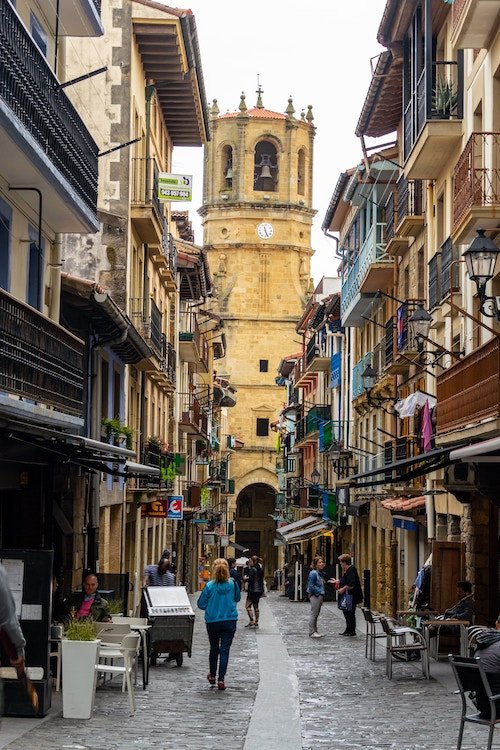

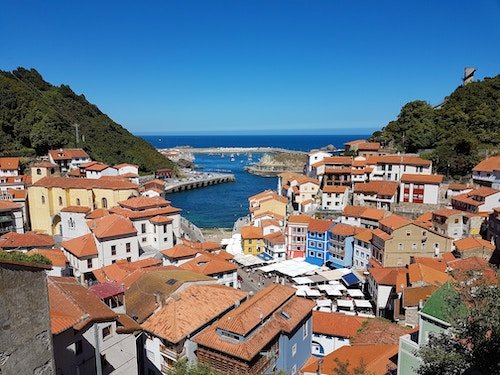
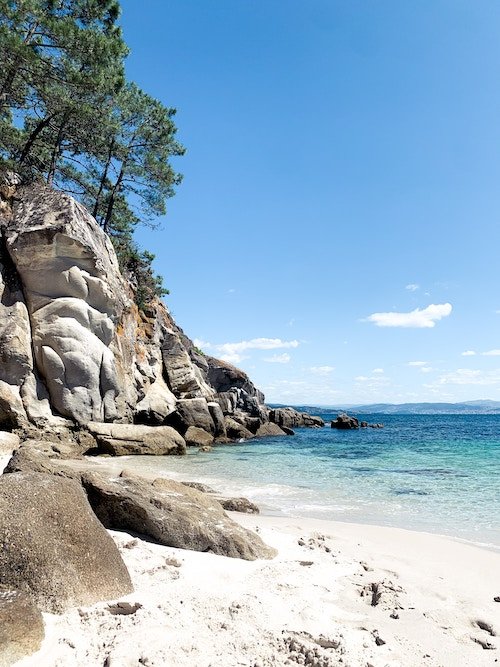
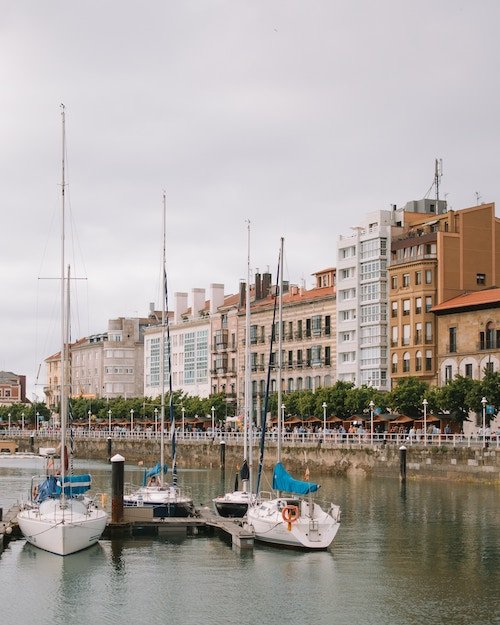
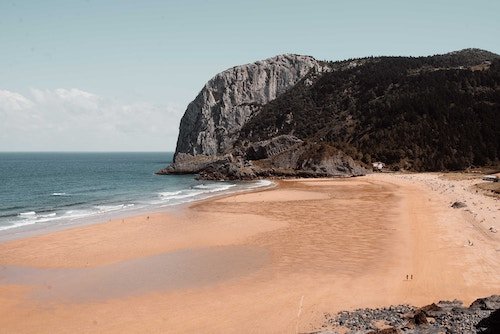
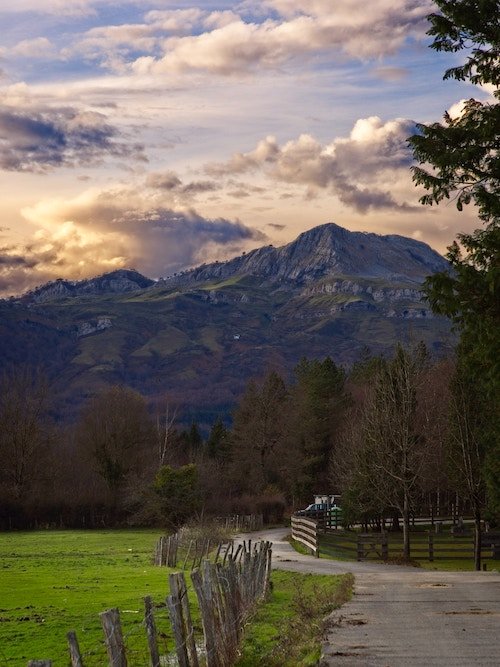
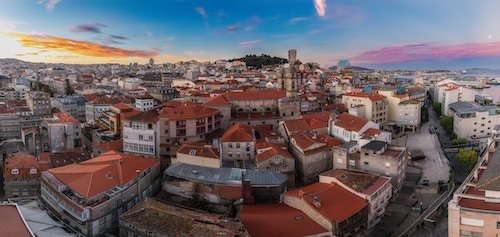
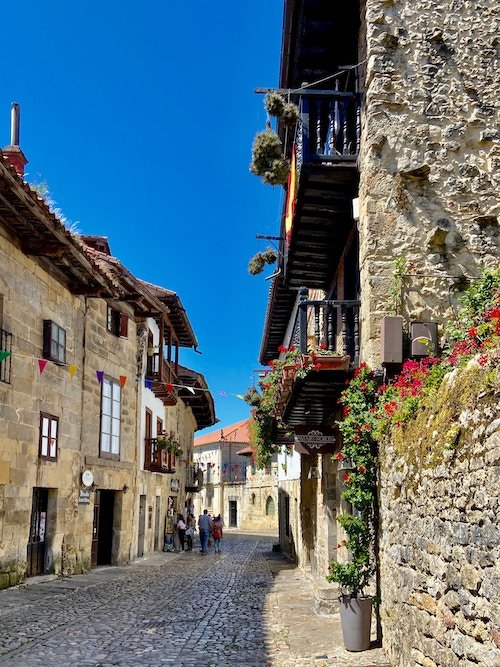
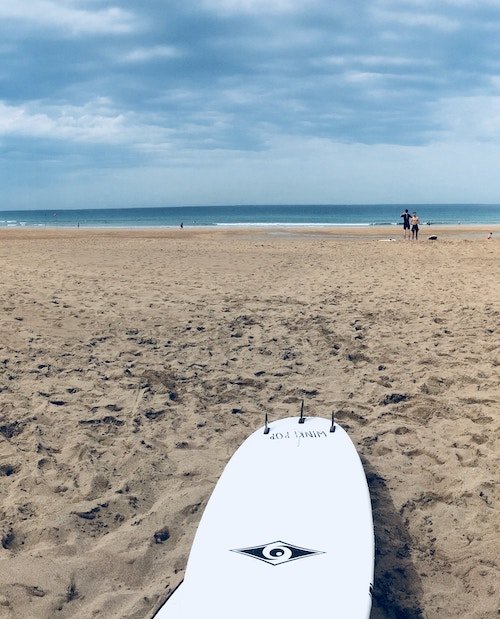
If there is an aspect that unites and is shared by every part of Northern Spain, it’s the cuisine. Although varied from region to region, everywhere in the North of Spain is a safe bet for having some of the best meals of your life.
But cuisine is not the only thing that attracts visitors! We’ve also got important cultural and modern hubs such as Bilbao, San Sebastián, and A Coruña.
And when (if?) you get tired of our cities, right next door to them you’ll find dreamy little villages like Getaria or Muros, breathtaking and miles-long beaches on Galicia’s Atlantic coast, historical landmarks like Santiago de Compostela and Oviedo, and countless natural gems, the Picos de Europa chief among them.
And while you should absolutely enjoy copious meals here, those meals need to be earned! Thankfully, the abundance of stunning natural areas means there are loads of outdoor activities to partake in.
The outdoors options are endless: from hiking in the mountains or along the coastline, surfing in some of Europe’s best spots, and cycling along the famous roads of the Basque country to rafting at the Sella River or just chilling with a beer after a swim at one of thousands of beaches.
So that’s my equation for a successful holiday n northern Spain: nice food, active tourism, some culture in our cities, a taste of the past in laid-back villages, and a whole lot of nature.
For specific ideas, here are some of my favorite places to visit and things to do in this region:
Eat, eat, and eat some more: San Sebastián is the Mecca in terms of cuisine in the Iberian Peninsula, but every little, with their family taverns, will serve you something delicious.
Take advantage of the wide cultural offerings in our bigger cities: if you’re a culture-lover, visit Bilbao, A Coruña, Vigo, Oviedo. Music, arts, opera… they have it all.
Go to the San Sebastian International Film Festival: Every September, the city celebrates the San Sebastian International Film Festival, which is a major cultural event. Definitely a must-go if you love cinema.
Take a trip back in time by visiting charming our charming villages and towns, some of which are internationally known for their beauty: Getaria, Santillana del Mar, Cudillero, and Combarro are just a few.
Discover early Christian History in Santiago de Compostela - One of the world’s great religious cities, European pilgrims have been traveling here by foot since the 10th century.
Hike in the Picos de Europa park: the park, one of the highlight attractions in all of Spain, never mind just the north, is completely unique in Europe. You’ll have scenic views no matter where you go, but for hiking lovers, there is one specific trail there that stands out above the rest: La Ruta del Cares.
Hit the beach: there are 1,000 kms of gorgeous coast in Northern Spain, and there are too many to name. However, here are a few must-visits: the Rodas Beach in the Cíes Islands, and the Laga Beach in Bizkaia are considered among the best in the world.
Go surfing: for great waves, don’t miss Zarautz, Razo, Pantín, Ribadesella, Santoña… you have plenty of options.
Where to go on a first trip
1. San Sebastian (in the Basque country)
Probably the most visited city in Northern Spain, San Sebastián has it all. With the best food in the country, renowned because of its creative little “bites”: the pintxos, as we call them, are served in practically every bar and restaurant in town.
The city is also home to the most beautiful urban beach in Europe, La Concha, a gorgeous enclave where you can enjoy the sun and the sea while surrounded by buildings that will make you feel as if you’ve transported back in time to the Belle Epoque era. On top of this, right nearby you can enjoy all sorts of outdoor activities: biking, surfing, hiking.
This is also the perfect base from which to undertake day trips around the Basque country and nearby Navarra.
Can you really ask for more in a city this size (just 187,000 people)? I don’t think so, but if there’s something else that you’re looking for, odds are that San Sebastián’s got it.
2. The beaches of the Basque coast (in the Basque country)
The trip from San Sebastian to Zarautz, and then on to San Juan de Zatelugatxe is probably the best beach hopping day-trip that you can do anywhere in Spain. While cruising along a 100-kilometer stretch of coastline, you will see gorgeous scenery, great beaches, and chill surf towns the entire way.
So grab your backpack from your base in San Sebastián and get ready to hop from one town to the next on the Basque seashore.
First, visit the biggest surfer town in Europe, Zarautz. Then, get the best grilled fish of your life in Getaria. Next, witness first-hand the intimate relationship that the Basques have with the ocean in the villages of Bermeo, Lekeitio, and Mutriku. At the end of the day, cap things off by visiting the breathtaking chapel of San Juan de Gaztelugatxe.
Having your own car or campervan is the ideal way to do this day-trip, but you can even manage it with the Basque commuter train: Euskotren.
3. Bilbao (in the Basque country)
The cultural hotspot of Northern Spain, Bilbao is a refined city that has tons to offer for anyone with high-end taste and a love of the arts. From the iconic Guggenheim Museum - a must-visit European cultural institution and a superb architectural structure -, to the “cathedral” of Spanish football, the San Mamés stadium, Bilbao really does have quite a lot to offer for just about anyone.
With tons of theater shows and operas, concerts every single night of the year, and a vibrant, modern, cosmopolitan nightlife, Bilbao offers a chance for visitors to experience a bit of culture and high society.
However, we never forget our roots, and you’ll also find plenty of traditional bars and taverns along the Seven Streets (look it up!).
Bilbao is modern, bustling, refined, artistic, and exciting. This is a place to break from the tranquility of much of northern Spain and experience a vibrant city. Enjoy it!
4. The region of Navarra
Located at the foot of the Pyrenees, Navarra (home to Pamplona) has the deepest, most undisturbed forests that you’ll find anywhere in the Iberian Peninsula - and probably in all of Southern Europe.
If you visit during the autumn, be sure to go to the Selva de Irati (a 2 hour-trip from San Sebastián), a breathtaking beech forest whose leaves turn every imaginable color during the months of October and November.
During any other season (and during the fall as well!), visit the Baztán Valley. It’s just one hour from Donostia, but is full of the magic that the Basque side of the Pyrenees offers.
5. Picos de Europa (in Asturias)
Earlier in this guide I recommended Potes as the perfect base from which to visit the Picos de Europa, but I realize you may be asking yourself “what is that, and what’s there to see there?”. Well, if you google it, you’ll understand as soon as you see the first picture - this is a mountainous area of stunning natural beauty.
The best way to summarize the Picos de Europa, and the best thing to do there, is unquestionably to hike La Ruta del Cares.
Probably the best-known mountain hike in Spain, this absolute beauty takes you - with some effort - through the gorge of the Cares River and along it until you emerge to glorious views of the Picos de Europa and the Cantabrian Sea, all at the same time. Sounds wonderful I know, but trust me, it’s even better than it sounds.
The hike stretches for about 11 kilometers, running on suspended paths above the Cares River, and passing through unbelievable scenery the entire time. This is one of the most beautiful hikes anywhere in Spain.
6. Gijón and Oviedo (in Asturias)
Gijón and Oviedo have a fierce rivalry: anyone from Gijón will tell you that Gijón is the much better city, while those from Oviedo will tell you the exact opposite.
Honestly, I can’t decide which I like more, but I love them both. They are must-visit destinations on any Northern Spain trip, and the best thing you can do is make time to visit both of them.
Oviedo is an architectural gem from past times, and it’s a city that the film director Woody Allen fell in love with (and he’s made a lot of movies in a lot of cities, so has certainly seen enough to compare it with). Gijón is different: it’s not beautiful in the same way, but it has a certain vibrancy, sitting open to the sea and with a real maritime feel. Different vibes, certainly, but neither better than the other.
So, don’t choose, just visit them both. And never tell the locals that you prefer the other one!
7. A Coruña (in Galicia)
A Coruña will likely be your first stop in Galicia, which is the last part of northern Spain that you’ll be visiting, assuming you travel from east to west (San Sebastian to Galicia).
This seaside city has little in the way of big name sights or monuments, but it has a kind of magnetic allure to it, and visitors often find themselves sticking around for longer than they’d initially planned.
You haven’t known what nightlife means until you go for a night out in A Coruña, until you go for some raciones in La Barrera and then let the night go on forever from there. You might not even sit down for dinner until midnight, and you might not be returning home until the sun rises.
To cure the inevitable hangover the next day, it’s a tradition to go for a walk on the city’s seafront promenade, the longest in Europe, and then jump in the water at Orzán beach.
8. Santiago de Compostela (in Galicia)
If you know anything about Galicia, you’ve probably heard of Santiago de Compostela. Hundreds of thousands of Christian pilgrims pass through the city every year, as it is the final destination on the Camino de Santiago.
For this reason, Santiago is absolutely mobbed during the summer months. If you can visit at another time of year, I’d strongly recommend that.
Because in any other month, the city shows its true face: its medieval magic, its narrow streets full of stories, its boisterous student nightlife, and its cultural side. With just shy of 200,000 residents, and a huge student population, this is a charming city that seamlessly blends history and modern life together into a lovely package.
9. Rías Baixas (in Galicia)
Too many stops, too many cities, and too many kilometers traveled on your northern Spain road trip. You know what would be the best way to recover from so much rushing about? A place full of coves and beaches, with lovely weather, not too many people, glassy water, fun beach bars, and good food accompanied by even better wine.
Sounds pretty nice doesn’t it? Well, the good news is that this place exists, and its name is Rías Baixas. Located on the southwestern coast of Galicia, this is an idyllic coastal area that is the perfect place to relax after a busy trip.
Stay on its estuarine inlets or head out to the Ons and Cies Islands and you’ll while away a few days in blissful peace and tranquility. Here, more than anywhere else, you’ll discover the connection between the sea and Galician culture.
10. Finisterre (in Galicia)
The Cape of Finisterre was considered the end of the world by Romans, and the Camino de Santiago also ends here, so how can you not make it the last stop on your Northern Spain trip?
Finisterre, the most western point of Northern Spain, is an isolated piece of land that almost crashes into the Atlantic Ocean.
Finisterre is coarse, windy, and wild. Finisterre is where your trip through Northern Spain should end.
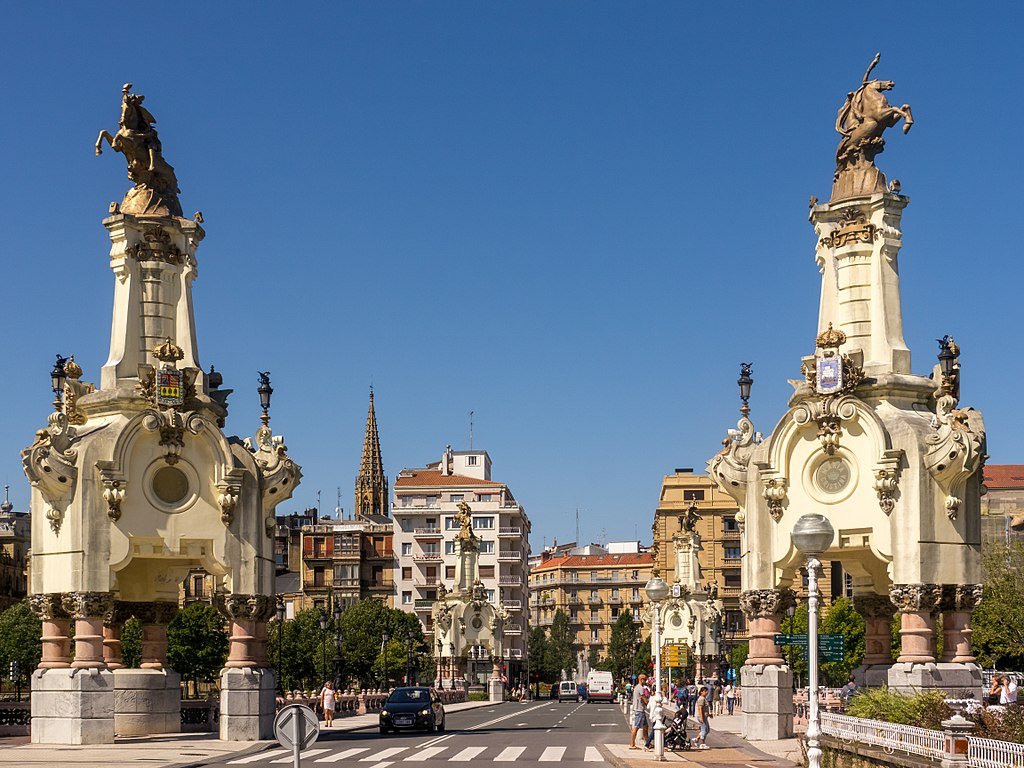


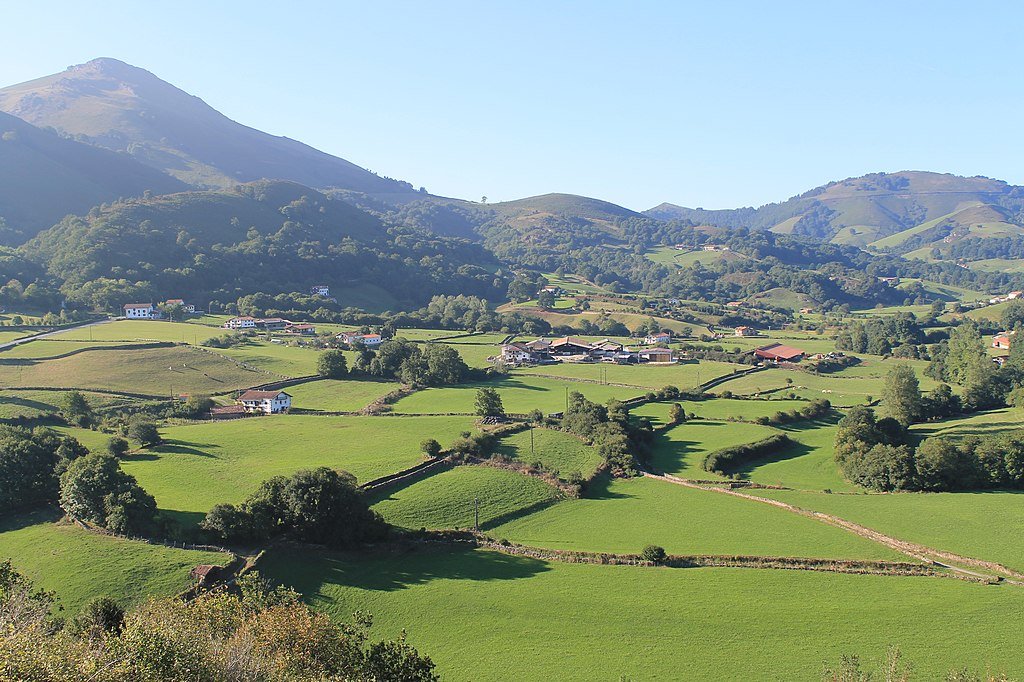

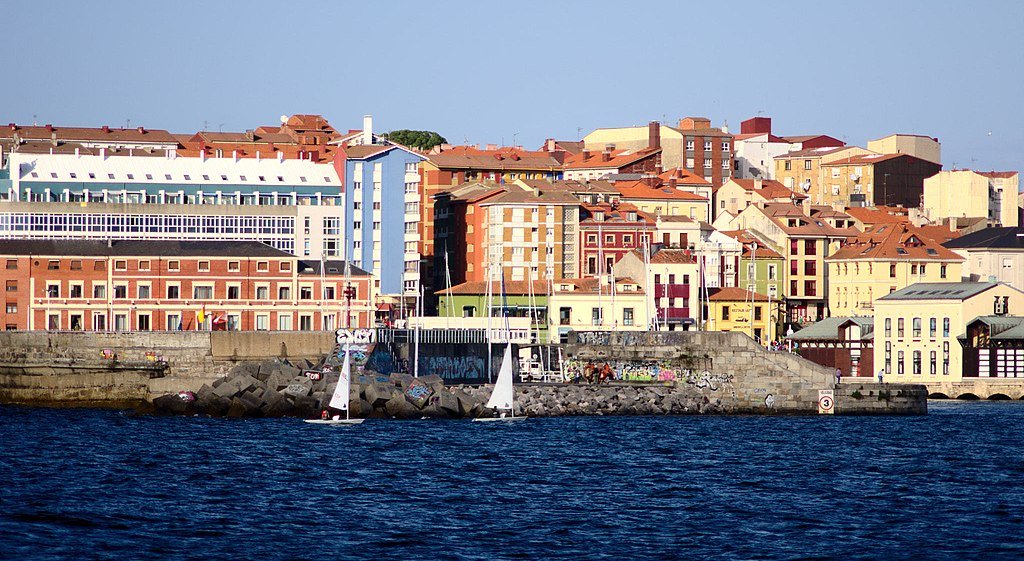
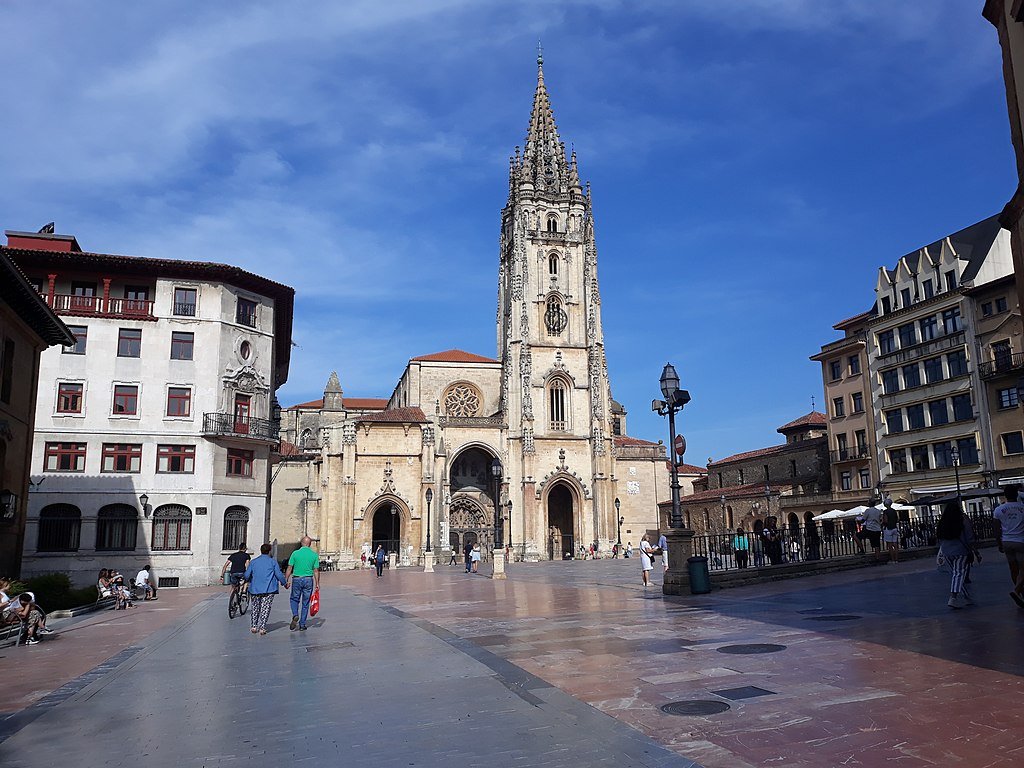






Our local expert Alfonso has answers!
Stop wasting time and connect with Alfonso for the best local advice and expert help planning a better trip!
Northern Spain itineraries: from 5 days to 3 weeks
5-day itinerary: San Sebastián, Bilbao, Oviedo, Santiago
Days 1-2: San Sebastián on the first day, followed by a tour from San Sebastián through the Basque Coast all the way to Bilbao
Day 3: Oviedo
Days 4-5: Santiago de Compostela and a day trip to A Coruña
10-day itinerary: San Sebastián, Bilbao, Picos de Europa, Oviedo, Santiago, Rías Baixas
Days 1-2: San Sebastián on the first day plus a one-day tour to Pamplona.
Day 3: Trip from San Sebastián to Bilbao through the Basque Coast, staying on the latter for the night.
Days 4-5: Picos de Europa: Ruta del Cares hike
Days 6-7: Oviedo and Gijón
Days 8-9: Santiago de Compostela and a one-day trip to A Coruña
Day 10: Trip to the beaches of Rías Baixas
14-day itinerary: San Sebastián, Surfing at Zarautz, Bilbao, Picos de Europa, Santander – Oviedo – Santiago
Days 1-2: San Sebastián on the first day plus a one-day tour to Pamplona
Day 3: Surf day plus lunch/dinner at Zarautz
Day 4-5: Trip from San Sebastián to Bilbao through the Basque Coast, staying on the latter for the night and the next day. Visit to the Guggenheim Museum of Bilbao
Days 6-7: Picos de Europa: Ruta del Cares hike
Days 8-9: Santander, with a trip to Santillana del Mar and San Vicente de la Barquera on the second day
Days 10-11: Oviedo and Gijón
Days 12-13: Santiago de Compostela and a one-day trip to A Coruña
Day 14: Trip to the beaches of Rías Baixas
21-day itinerary: Navarra, San Sebastián, Surfing at Zarautz, Bilbao, Picos de Europa, Santander, Oviedo, Santiago, Galician Coast
Days 1-2: Pamplona, plus a trip to the forests of Navarra (Elizondo, Irati)
Days 3-5: San Sebastián, with a pintxos tour through the old town, plus a visit to the town of Hondarribia
Day 6: Surf day plus lunch/dinner at Zarautz
Days 7-9: Trip from San Sebastián to Bilbao through the Basque Coast, staying on the latter for the night and the next day. Visits to the Guggenheim Museum of Bilbao and to the San Mamés Stadium (for football lovers) or Café Antzokia (for music lovers)
Days 9-11: Picos de Europa: Ruta del Cares hike, visits to Arenas de Cabrales and Lagos de Covadonga
Days 12-13: Santander, with a trip to Santillana del Mar and San Vicente de la Barquera on the second day
Days 14-15: Oviedo and Gijón
Days 16-17: Santiago de Compostela and a one-day trip to A Coruña
Days 18-20: Trip through the Galician Coast: Islas Cíes
Day 21: Departure from northern Spain.



Alfonso Nuñez
Spain Expert based in San Sebastián
¡Hola y buenos días! 👋
Hi, I'm Alfonso, and I've been a tour guide and travel consultant here in Spain for the last 18 years. If you're looking for some local advice on your trip, I'd love to help!
Learn more Book a consultation
Connect with Alfonso

 How to get around
How to get around
















